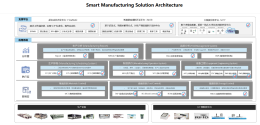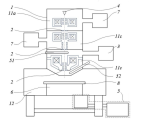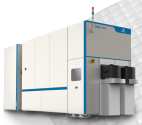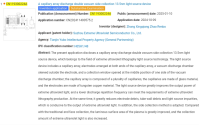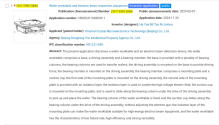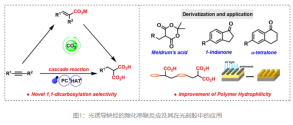Scientists from Shanxi University have developed a dual-frequency laser interferometer ultra-precision measurement device with femtometer-level (1 nanometer = 1000 picometers, 1 picometer = 1000 femtometers) accuracy, which can fully meet the needs of EUV and even the next generation of EUV lithography machines.
Highly stable dual-frequency laser based on dual acousto-optic modulation
He Ziyang1An Bingnan1Wang Tao1Zhao Xiaokang1Liu Xiangsong1Chen Lirong1,2,3Wang Yajun1,2
1. National Key Laboratory of Quantum Photonics Technology and Devices, Institute of Optoelectronics, Shanxi University 2. Collaborative Innovation Center for Extreme Optics, Shanxi University 3. Shanxi Provincial Key Laboratory of Wireless Communication and Detection, Shanxi University
Abstract: High-stability dual-frequency laser light source is a key technology to achieve national ultra-precision measurement capabilities and a cornerstone to support the quality of high-end equipment manufacturing . Based on the dual-acoustic-optical modulation scheme, this paper builds a high-stability dual-frequency laser light source and its frequency difference stability evaluation system. By studying the mechanism of dual-frequency laser generation by dual-acoustic-optical modulation, the frequency difference stability degradation model is constructed step by step, and targeted technical improvements are made. Studies have shown that both the frequency stability of the dual-frequency laser light source and the dual-frequency frequency difference stability will affect the accuracy of heterodyne interferometry, and the dual-frequency frequency difference stability is determined by the stability of the RF signal and the nonlinear distortion of the power amplifier. By designing high-order harmonic filtering technology and a high-stability RF generator based on a rubidium clock, this paper optimizes the frequency difference stability to 9×10-11@1s and 6×10-10@1000s, and reduces the influence of the dual-frequency frequency difference stability on the heterodyne interferometry accuracy to the sub-femtometer level. At this point, the frequency difference stability index of the dual-frequency laser light source fully meets the application requirements of picometer-level laser interferometry. Combined with the most advanced ultra-stable cavity frequency stabilization technology, our highly stable dual-frequency laser light source can support heterodyne interferometry with picometer or even femtometer accuracy, and has important application prospects in fields such as ultra-precision measurement.
Full text link:
Highly stable dual-frequency laser based on dual acousto-optic modulation
He Ziyang1An Bingnan1Wang Tao1Zhao Xiaokang1Liu Xiangsong1Chen Lirong1,2,3Wang Yajun1,2
1. National Key Laboratory of Quantum Photonics Technology and Devices, Institute of Optoelectronics, Shanxi University 2. Collaborative Innovation Center for Extreme Optics, Shanxi University 3. Shanxi Provincial Key Laboratory of Wireless Communication and Detection, Shanxi University
Abstract: High-stability dual-frequency laser light source is a key technology to achieve national ultra-precision measurement capabilities and a cornerstone to support the quality of high-end equipment manufacturing . Based on the dual-acoustic-optical modulation scheme, this paper builds a high-stability dual-frequency laser light source and its frequency difference stability evaluation system. By studying the mechanism of dual-frequency laser generation by dual-acoustic-optical modulation, the frequency difference stability degradation model is constructed step by step, and targeted technical improvements are made. Studies have shown that both the frequency stability of the dual-frequency laser light source and the dual-frequency frequency difference stability will affect the accuracy of heterodyne interferometry, and the dual-frequency frequency difference stability is determined by the stability of the RF signal and the nonlinear distortion of the power amplifier. By designing high-order harmonic filtering technology and a high-stability RF generator based on a rubidium clock, this paper optimizes the frequency difference stability to 9×10-11@1s and 6×10-10@1000s, and reduces the influence of the dual-frequency frequency difference stability on the heterodyne interferometry accuracy to the sub-femtometer level. At this point, the frequency difference stability index of the dual-frequency laser light source fully meets the application requirements of picometer-level laser interferometry. Combined with the most advanced ultra-stable cavity frequency stabilization technology, our highly stable dual-frequency laser light source can support heterodyne interferometry with picometer or even femtometer accuracy, and has important application prospects in fields such as ultra-precision measurement.
Full text link:

